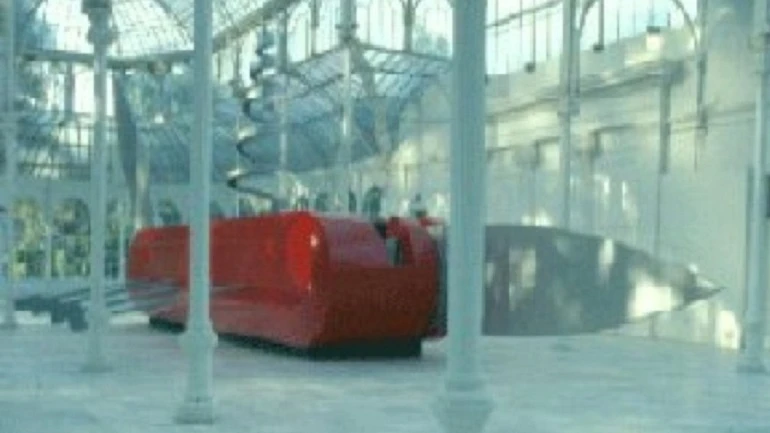Knife Ship = Il Corso del Coltello: Claes Oldenburg, Coosje van Bruggen, Frank O. Gehry

The initial idea came about in 1983 with the idea (that never materialised) of the boat being placed as a monument in Basel. The image of the large knife blades (initially referring to the Swiss army) was devised as a symbol of cutting and separating; recurring in Oldenburg and van Bruggen's projects are cutting instruments, such as scissors and knives, as macro-signs, tools that metaphorically split the chain of relationships and section reality. Frank O. Gehry has also explored the direct relationship of the metaphor of the knife in his work - for him architecture is a sharpened scalpel that traverses, slices, separates and tears the centre of spatial, architectural and urban development issues with its blade. In an article published in Artforum, van Bruggen talks about how, by chance, “the knife and corkscrew are not only equal to a fish, but also a snake, the two biomorphic forms Gehry frequently uses in his architecture.”
The knife, albeit an image, structurally corresponds to the Venetian gondolas, modern tug boats and even the Bucintoro, a Venetian ceremonial boat. By means of the penknife, with its blades open upwards, the Knife Ship engages with the vertical structures in Venice, for instance the Il Campanile de San Marco and the parapets of the Arsenale. The red of the boat's hull reflects the ceremonial events that appear in Canaletto's paintings, while the souvenir appearance of the enormous floating sculpture and its distant origins make references to tourism, Venice's main source of income.
The Knife Ship is the centrepiece of the exhibition curated by Germano Celant, the critic, curator and one of the figures behind the popularisation of Arte Povera at the end of the Sixties. The vessel-sculpture is exhibited in the Palacio de Cristal in the Retiro park, a space which Oldenburg claimed is, “interesting in its own right, the Palacio de Cristal has exactly the right dimensions”, as he talked about the exhibition in Madrid in an interview.
Artists
Centre Pompidou, Paris (July 7 - October 5, 1987); Guggenheim Museum, New York (January 9 - February 16, 1987)
Organised by
Dirección General de Bellas Artes y Archivos
Image gallery
